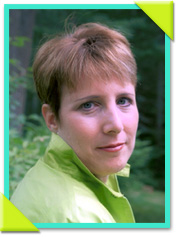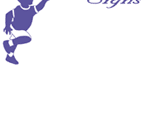|
Description
This invaluable, one-of-a-kind resource is the first book to
help parents detect early signs of autism and related disorders
and take the steps that can make a dramatic difference in a
child’s life. Could It Be Autism? A
Parent's Guide to the First Signs and Next Steps provides
parents with vital information so they can recognize the “red
flags” of developmental delays and begin intensive intervention
as early as possible.
Emphasizing the need to look for early warning signs, Nancy
Wiseman describes the most important milestones at each stage of
a child’s growth, including aspects of development parents often
overlook. Her easy-to-use milestones checklist is an
indispensable tool for determining whether a child has
difficulties that demand immediate attention. She explains early
screening tests, helps parents to navigate the referral and
diagnostic process, offers suggestions for creating an
appropriate treatment plan together with physicians and other
experts, and gives inspiring examples of children who have
benefited from early and intensive intervention.
Accessible, authoritative, and eminently practical,
Could It Be Autism? A Parent's Guide to the
First Signs and Next Steps will help to improve the lives
of thousands of children.
About Nancy D. Wiseman
 Nancy
Wiseman is founder and president of First Signs, parent of a
child with autism, and author of two books:
Could It Be Autism?
A Parent's Guide to the First Signs and Next Steps (Broadway
Books, 2006) and The First Year: Autism Spectrum Disorders: An
Essential Guide for the Newly Diagnosed Child (Da
Capo Press, 2009). She has made a significant contribution to
changing policy, improving awareness, and changing pediatric
practice in how we screen, refer, and detect young children
today. Nancy is the 2006 recipient of the American Academy of
Pediatrics’ Dale Richmond/Justin Coleman Award for her
outstanding achievement in child development. Nancy
Wiseman is founder and president of First Signs, parent of a
child with autism, and author of two books:
Could It Be Autism?
A Parent's Guide to the First Signs and Next Steps (Broadway
Books, 2006) and The First Year: Autism Spectrum Disorders: An
Essential Guide for the Newly Diagnosed Child (Da
Capo Press, 2009). She has made a significant contribution to
changing policy, improving awareness, and changing pediatric
practice in how we screen, refer, and detect young children
today. Nancy is the 2006 recipient of the American Academy of
Pediatrics’ Dale Richmond/Justin Coleman Award for her
outstanding achievement in child development.
Reviews
The following is a compilation of book reviews for Nancy D. Wiseman’s book:
Could It Be
Autism? A Parent’s Guide to the First Signs and Next Steps.
[Read an exceprt |
Order online]
Kirkus Report
Title:
Could It Be Autism? A Parent's Guide to the First Signs and Next Steps
Author: Wiseman, Nancy D.
Review Date: NOVEMBER 01, 2005
Publisher: Broadway Books
Price (hardback): $22.95
Publication Date: January 2006
ISBN (hardback): 0767919726
Classification: PARENTING
A wise guide for all parents of autistic children.
Autism becomes an increasingly salient concern as the number of children
affected grows every year. The sooner the disorder is recognized and diagnosed,
the sooner intervention and proper treatment can begin. That's why, in contrast
to the often prevalent “wait and see” attitude, Wiseman advocates that parents
act on instinct and respond seriously to questions about their children's
social, emotional or behavioral development, since autism can be diagnosed in
infants as young as four months. The founder and president of a non-profit
organization dedicated to educating parents and pediatric professionals about
the early warning signs of autism, she is also the mother of a nine-year-old
autistic child. Her intimate style will be a comfort to concerned parents, and
she answers all the questions, from how to recognize the early warning signs of
autism (including those often overlooked by pediatric professionals) to what
kind of treatments are available to the best way to tailor and implement the
intervention plan most suited for your child's needs.
Informative, empowering and inspirational, a critical guide for any parent with
concerns about their child's developmental path.
Library Journal
December 2005
Wiseman, Nancy D.
Could It Be Autism? A Parent's Guide to the First Signs and Next Steps.
Broadway. Jan. 2006. c.272p. bibliog. index. ISBN 0-7679-1972-6. $22.95. CHILD
REARING
For children with Autism Spectrum Disorders (ASD), early intervention programs
are critical in lessening the impact of autism. Wiseman, the mother of an
autistic child and founder of First Signs (www.firstsigns.org), a group working
to identify early signs of ASD, here provides effective and balanced ways for
parents to interpret these signs in their own children. Well written and with
quotes from parents, her book includes sections on spotting the early signs of
ASD, getting the diagnosis, and finding help for both the child and the adult.
The section on the diagnostic process is excellent in addressing this difficult
time for parents by providing ways for them to help professionals with the
assessment. Also useful is the description of other tests that should be sought
out, such as a hearing test, to rule out health issues that can have an impact
on the child's development. Because it serves as a tremendous resource for
parents confronting the possibility of ASD with their child, this book, complete
with examples of children who have benefited from early intervention, is
strongly recommended for all public and academic libraries with autism or
education collections.-Corey Seeman, Univ. of Michigan Lib., Ann Arbor
Publishers Weekly
Web-Exclusive Reviews: Lifestyle -- 1/2/2006
Could It Be Autism? A Parent's Guide to the First Signs and Next Steps
Nancy D. Wiseman. Broadway, $22.95 (272p) ISBN 0767919726
For parents worried about their children's development, Wiseman, president of a
developmental disorder awareness organization and the mother of an autistic
child, promotes a rigorous approach to identifying autism warning signs,
stressing early diagnosis as a crucial component of securing proper
post-diagnosis treatment. Writing conversationally, Wiseman covers all the
autism bases—symptom detection, diagnosis, treatment options, redefining
parental obligation—in 10 topical chapters, splicing comments from parents of
autistic children with advocacy information, the latter of which is plentiful
and hard-nosed. Public schools' special education programs and government-funded
development therapy initiatives are taken to task, with Wiseman warning parents
"you must always be prepared to fight" and suggesting parents brush up on
relevant laws, reach out to advocacy organizations and community groups, and,
above all, be the child's unflinching advocate. Wiseman's approach does not get
bogged down in the minutia of endless record keeping, instead favoring a big
picture approach and a checklist of "social, emotional, and communication
milestones" designed to allow parents to keep track of a child's development
beginning at four months of age. Packed with clear-cut suggestions, this book
will be a valuable resource for parents facing weighty questions about their
child's behavior. (Jan.)
Washington Post
Title: Could It Be Autism? A Parent's Guide to the First Signs and Next Steps
Author: Wiseman, Nancy D.
Review Date: FEBRUARY 28, 2006; Page HE03
Publisher: Broadway Books
Price (hardback): $22.95
Publication Date: January 2006
ISBN (hardback): 0767919726
Classification: PARENTING
A Prompt to Act Fast
“Let's just wait and see” is a phrase many worried parents hear from the
pediatrician when they express concerns about their infant's or toddler's
development. But sometimes “wait and see” just doesn't cut it -- especially
when it comes to possible signs of autism. This book, by parent/activist Nancy
Wiseman (founder of First Signs Inc., a national nonprofit group dedicated to
early identification of autism) tells parents what to watch for and when to get
pushy.
Early Red Flags Your child isn't smiling by 6 months? Babbling and pointing
by 12 months? Using meaningful two-word phrases by 24 months? None necessarily
means he has autism. But they are signs to get an immediate, formal evaluation
by a developmental disorders expert. Wiseman includes several screening tools
that help parents spot early warning signs -- vital info, since most experts
say intensive intervention before age 3 has the most profound impact.
Subtle Clues The author discusses subtler signs of problems. For example,
an 18-month-old may meet the developmental milestone of using 10 different
words, but just saying them isn't enough. “It's one thing to say cheese' when
you want a cube of mozzarella,” Wiseman explains. “It's quite another to say
'cheese' over and over all day” when there are no dairy products in sight.
What Next? Say your child is diagnosed with developmental difficulties.
Wiseman explains the many therapy options available, while emphasizing that
there's no “right” one. Instead of looking for such a solution, she urges
parents to prioritize their child's needs and pick therapies accordingly.
Parents will especially appreciate the tips from a mom who's been there and
done that -- e.g., how to get in to see the specialist who has a two-year
waiting list.- Lisa Barrett Mann
[Read an exceprt |
Order online]
| 



